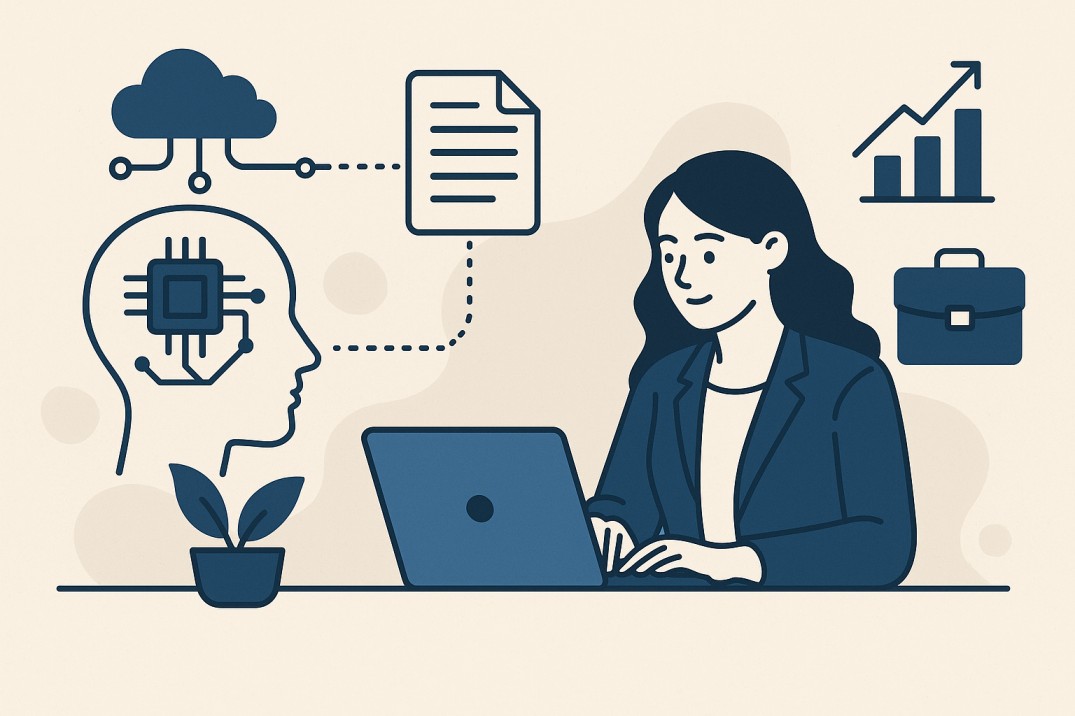AI writing tools are changing how text is produced and how professionals understand their responsibilities, skills, and impact. What began as a convenience for drafting emails or summarizing notes now challenges the boundaries of authorship, expertise, and communication.
In many sectors, workers are quietly adjusting their approach to written tasks. Some employees who once drafted reports or built presentations from scratch now use AI as a creative assistant. Others have started using tools that mirror services where people pay for essay writing anonymously, seeking quick, efficient outputs while minimizing personal exposure. These changes are reshaping how professionals view their contributions, expanding their roles from writers to reviewers, curators, and decision-makers.
From Output to Oversight
AI writing shifts the focus from creation to supervision. Professionals now spend less time drafting content and more time refining, verifying, and contextualizing it. This new layer of responsibility favors those who can think critically and apply judgment, not just those who can write fluently.
Writers are becoming editors. Project managers are becoming interpreters of AI-generated output. Even technical staff must now learn how to prompt and evaluate tools that influence client communication, reports, or documentation.
Redefining What It Means to Add Value
For many roles, value was once tied to deliverables, like writing proposals, crafting messages, or preparing detailed notes. AI has changed that calculus. The ability to generate text is no longer scarce. What’s scarce is the ability to guide it meaningfully.
This shift elevates soft skills: clarity in feedback, ethical reasoning, and strategic thinking. It also places new importance on context. Knowing what to say is less critical than knowing why, when, and how to say it.
Skills Are Evolving Faster Than Titles
Job descriptions rarely keep up with tool adoption. Roles that once emphasized copywriting, customer support, or technical documentation now quietly rely on AI augmentation.
A content marketer may no longer need to write every campaign from scratch. A paralegal might summarize cases using AI tools. A consultant may use AI to create presentation outlines, focusing more on delivery than composition.
This doesn’t reduce the importance of those roles. It redefines the expertise they demand. Familiarity with prompting, editing, and quality control now sits alongside traditional domain knowledge.
Collaboration Is Shifting Across Teams
AI tools introduce a shared layer of content creation that spans departments. Marketing, sales, support, and legal teams may all use the same platform, but with different goals and levels of oversight.
This requires new forms of collaboration. Writers and subject matter experts must align on how AI should be used and reviewed. Editors need to develop processes for detecting subtle issues in tone or logic. Managers must decide when human input is essential and where automation can safely operate.
Collaboration now often includes both human input and AI-driven processes. This hybrid approach demands better internal workflows and shared standards for communication quality.
Emotional Labor and Identity Are Affected
Professionals who once found pride in crafting language may feel a loss of ownership. AI-generated drafts can create uncertainty about who really “wrote” the final version. For some, this undermines their sense of contribution and creativity.
At the same time, workers in traditionally undervalued writing roles may gain recognition by showing how they guide and improve AI output. The spotlight shifts from raw production to decision-making. This tension reshapes how people experience meaning in their work.
Adapting to AI in the workplace brings emotional challenges alongside technical ones. How people feel about their work, and how they explain it to others, is evolving.
New Standards for Authorship and Integrity
With AI in the mix, companies must define what counts as original. Who is the author when the first draft comes from a tool? How do teams attribute ideas or credit collaborative work?
These questions matter in everything from marketing campaigns to internal policy docs. Clear policies are needed to maintain ethical standards and avoid confusion.
As organizations decide how to use these tools, they must also teach employees where the boundaries are. AI can assist with efficiency, but responsibility still lies with the human in charge.
Tools Change, but Judgment Remains Central
Even the best website to pay for an essay won’t replace the professional who knows how to assess relevance, truth, and tone. The same goes for AI writing tools in the workplace. They may speed up execution, but they cannot replace judgment.
This reinforces the need for critical thinking, digital literacy, and communication ethics. Employers should help employees develop the skills needed to use AI tools effectively and responsibly.
AI Training Becomes a Core Requirement
Knowing how to use writing tools effectively is no longer optional. It’s becoming a core skill, especially in fields where communication and documentation play a major role.
Employees should be trained on:
- Writing strong prompts and giving clear instructions
- Reviewing AI-generated content for accuracy and bias
- Adapting tone for different platforms or audiences
- Flagging content that lacks clarity or originality
Training should also cover limitations. Understanding what AI tools can’t do is just as important as knowing what they can.
Workplace Norms Are Being Rewritten
AI writing is not a passing trend. It’s becoming a standard part of many workflows. This changes how teams share drafts, communicate feedback, and evaluate performance.
Organizations must now define expectations. Should AI be used for first drafts only? Should teams disclose when AI contributed to a document? Should client-facing work be reviewed differently?
Without clear norms, expectations become inconsistent. Employees may hesitate to ask questions or rely too heavily on automation without realizing the consequences.
Writing Services and AI Platforms Are Converging
The gap between a traditional essay writing service, EssayService, for example, and AI-enabled platforms like ChatGPT is narrowing. Both offer ways to speed up content creation, but with different levels of customization and control.
Employees often explore both out of convenience or curiosity. Organizations need to be aware of this overlap and address it directly. If employees are using AI services or writing platforms for workplace tasks, those tools must meet the same standards as in-house systems.
This includes privacy, originality, and quality control. Relying on third-party platforms without oversight can lead to compliance issues or weakened brand trust.
Moving Forward with Intention
AI writing tools are not just speeding up content. They are changing how people understand their place in the workforce. For some, this means growth. For others, it brings questions about purpose and identity.
Organizations must guide this shift thoughtfully. Clear standards, open training, and recognition of emotional and technical impacts will help workers adjust without losing connection to their value.
In the future of work, writing may begin with AI. But how we shape, question, and stand behind that writing remains deeply human.


















